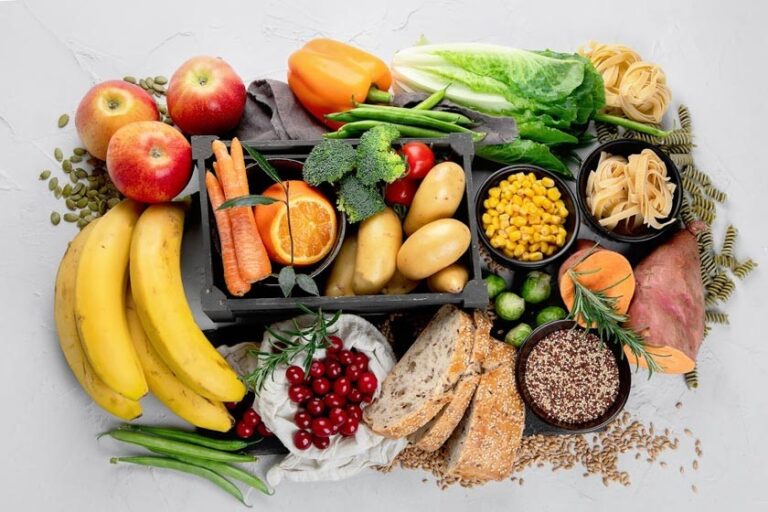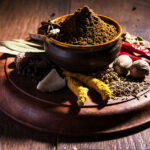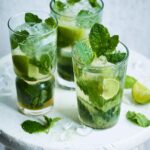When we talk about chronic ills, we always put our fingers on diabetes. Yes! Diabetes is a serious disease, and many people from all over the world struggle with it. Particularly, seniors are the common group that has diabetic problems. So, for diabetic people, nutrition is the most important factor for their health. When you have diabetes, figuring out the best meals to eat can be difficult. Because regulating your blood sugar levels should be your primary focus. Therefore, it’s also critical to consume foods that aid in preventing diabetes conditions such as heart attack. People with diabetes have to care more about their diet because they can’t do everything without thinking about the percent of sugar. Also, as a senior, we should learn about the ways of controlling the blood sugar.
Why is a balanced diet essential for diabetic persons?
The amount of food and drink you require depends on your age, gender, level of activity, and the goals you want to achieve. However, no particular ingredient contains all of the nutrients your body needs. That is why a balanced diet should include a variety of foods from all the major food categories. We refer to a balanced diet as one that eats more of some things and less of others. In recent years, due to bigger plates and bowls, portion sizes have increased. Furthermore, more significant amounts can make it more difficult to maintain a healthy weight.
Which foods are best for people with diabetes?
Generally, we have five nutritious groups:
- Fruits and vegetables
- Carbohydrate foods, such as bread or spaghetti and rice.
- Protein foods such as beans or meat
- Diaries
- Oils
Fruits and vegetables
You can still eat fruit if you have diabetes. Fruit and vegetables are low in calories and high in vitamins, minerals, and fiber. They also provide every meal with more flavor and variety. And when we talk about diabetes in seniors, we can speak about veggies and fruits too. It doesn’t matter if it’s fresh, frozen, dry, or canned. To get the most variety of vitamins and minerals, choose a rainbow of colors. Fruit drinks and smoothies are low in fiber and should be avoided. If you are trying to cut carbs, you might have to avoid fruit and vegetables. However, it is critical to include them in your daily diet. There are low-carb choices available. Natural herbs help you keep your digesting cycle and protect your body from chronic diseases like heart diseases, diabetes, or cancers.
Hydro carbonate foods
Potatoes, rice, pasta, bread, and chapattis are examples of starchy or hydro carbonate foods. They’re all high in carbohydrates, which our bodies break down into glucose and use as fuel. The difficulty with some starchy foods is that they can quickly elevate blood glucose levels, making diabetes management more difficult. These foods have a high glycaemic index (GI). Specific starchy food alternatives have a slower effect on blood glucose levels. Wholegrain bread, whole-wheat pasta, basmati, brown, or wild rice are examples of foods with a low glycaemic index (GI). They also include more fiber, which aids in the proper functioning of your digestion. If you’re aiming to reduce your carb intake, avoid white bread, pasta, and rice. Even diabetics need carbonate foods because of fiber. Because our digestive system needs fiber to control the large intestine function, they control your blood sugar and protect your heart.
Protein foods
Protein-rich foods like meat and fish keep your muscles in good shape. On the other hand, a healthy diet involves avoiding red and processed meat, linked to cancer and heart disease. Omega-3 oil is abundant in oily fish such as mackerel, salmon, and sardines, which can help improve cardiovascular health. The protein function in our body looks like a carbohydrate, and seniors should use that 53 g of protein each day to supply their daily energy. Protein also helps your heart muscle and keeps you from aging side effects.
Dairy products
Calcium and protein are abundant in milk, cheese, and yogurt, which are beneficial to your bones, teeth, and muscles. However, some dairy meals are heavy in fat, especially saturated fat, so go for lower-fat options. Look for added sugar in lower-fat dairy products, such as yogurt. If you want it to be sweeter, use unsweetened yogurt and add some berries. Drinking dairy replacements, like soya milk, is fine as long as it’s bland and calcium-fortified. Cow’s milk contains carbs in all forms, and patients with diabetes should take this into account when calculating their carbohydrate intake.
For persons who are not lactose intolerant, skim milk, like cow’s milk, can be a lower-fat, lower-calorie option. Skimmed milk may raise blood sugar levels because lower-fat food is absorbed so rapidly. Thus, glucose monitoring may help determine what type of milk to consume. Since nutrition in seniors with diabetes is more critical, consuming the diaries is necessary because it is useful for seniors’ muscles and the density of bones.
Which foods are harmful to people with diabetes?
None of these below should be part of a healthy diet. But, because we know you’ll eat certain things from time to time, it’s critical to understand how they might influence your health.
Biscuits, crisps, chocolates, cakes, ice cream, butter, and sugary drinks are among these foods. High sugar foods and beverages are high in calories and elevate blood sugar levels, so avoid them if you can. They’re also high in dangerous saturated fats, which are bad for your heart and cholesterol levels.
They can also be high in salt, mainly processed foods. High blood pressure and stroke are possible if you consume too much salt. Aim for no more than one teaspoon (6 grams) of salt per day.
‘Diabetic’ ice cream and sweets are not recommended. It is currently illegal to label any food as diabetic.



